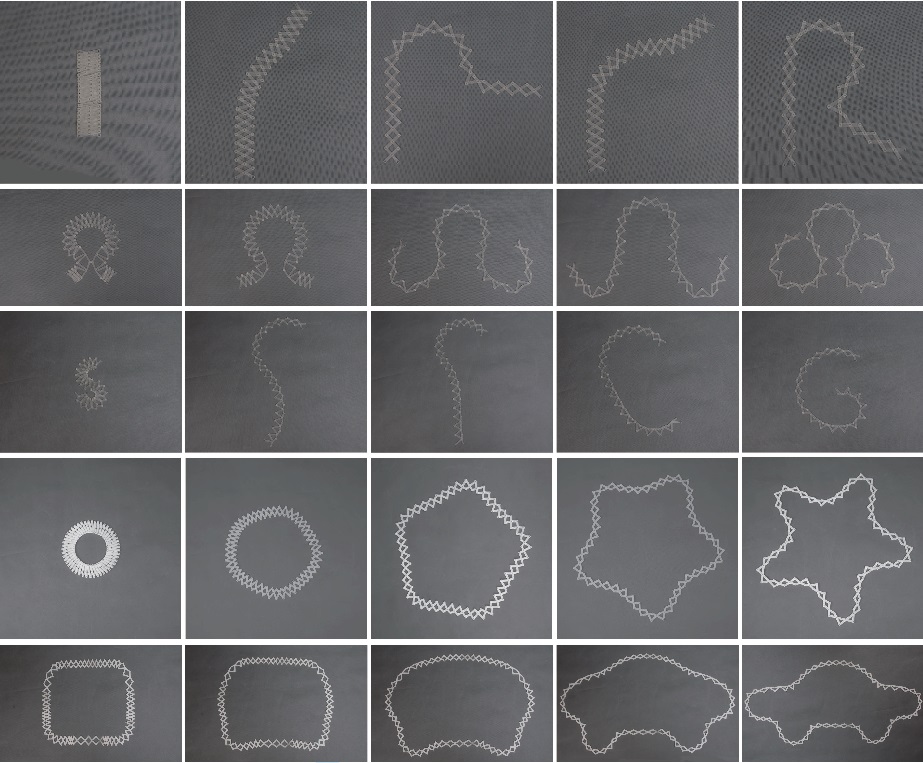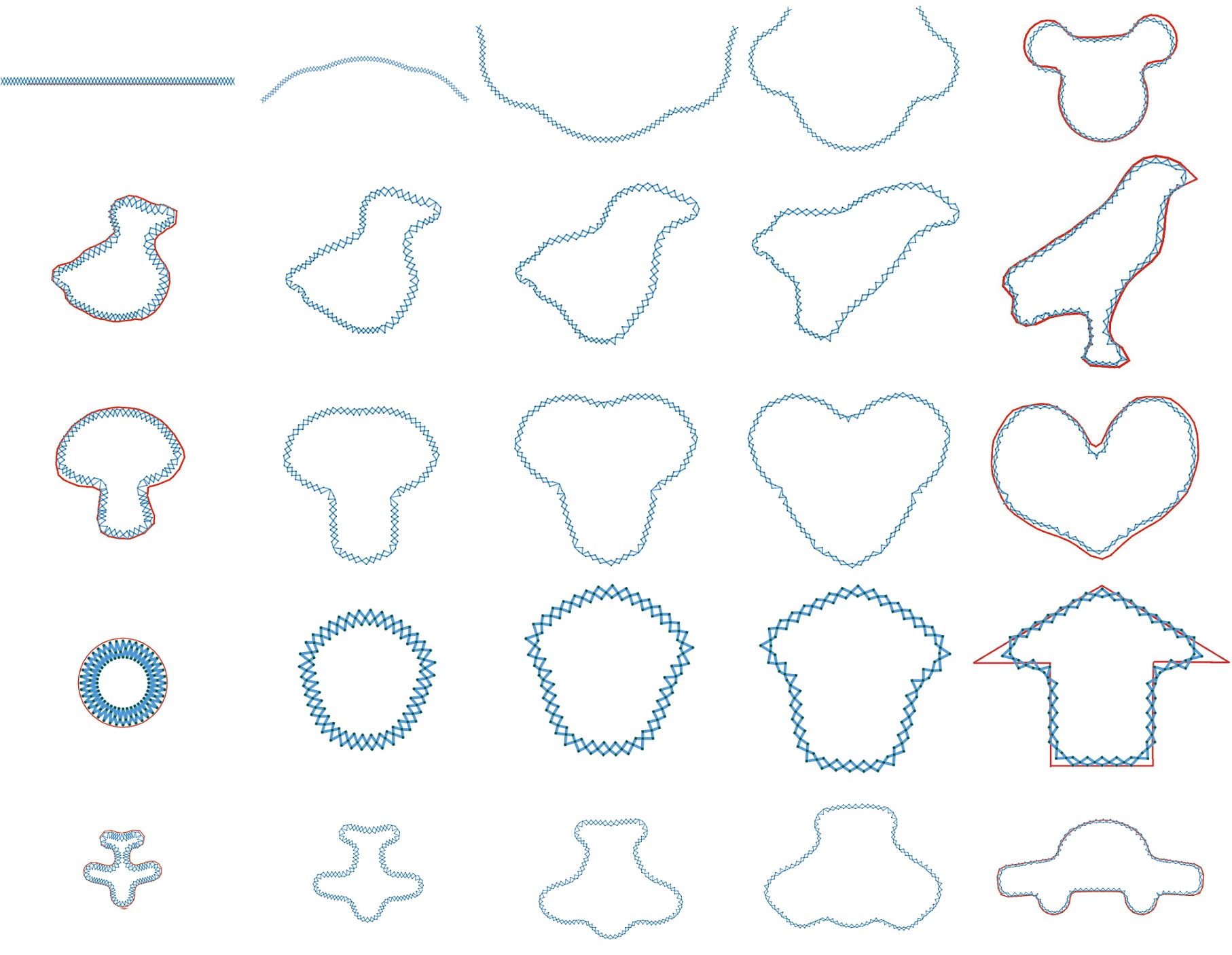Designing Planar Deployable Objects via Scissor Structures Ran Zhang Shiwei Wang Xuejin Chen* Chao Ding Luo Jiang Jie Zhou Ligang Liu University of Science and Technology of China IEEE Transactions on Visualization and Computer Graphics 2015 |
|||||
|
|||||
Abstract: |
|||||
Scissor structures are used to generate deployable objects for space-saving in a variety of applications, from architecture to aerospace science. While deployment from a small, regular shape to a larger one is easy to design, we focus on a more challenging task: designing a planar scissor structure that deploys from a given source shape into a specific target shape. We propose a two-step constructive method to generate a scissor structure from a high-dimensional parameter space. Topology construction of the scissor structure is first performed to approximate the two given shapes, as well as to guarantee the deployment. Then the geometry of the scissor structure is optimized in order to minimize the connection deflections and maximize the shape approximation. With the optimized parameters, the deployment can be simulated by controlling an anchor scissor unit. Physical deployable objects are fabricated according to the designed scissor structures by using 3D printing or manual assembly. We show a number of results for different shapes to demonstrate that even with fabrication errors, our designed structures can deform fluently between the source and target shapes. |
|||||
Results: |
|||||
 |
|||||
| Photos of the real objects fabricated by 3D pr inting with SLA material. | |||||
 |
|||||
| Photos of the real objects fabr icated by a car penter with wood. | |||||
 |
|||||
| Simulation for complex shapes. Our system is very flexible on a wide range of shapes. | |||||
| Acknowledgements: | |||||
The authors would like to thank the reviewers for their generous reviews that shaped the direction of the paper. Ran Zhang and Shiwei Wang both contributed equally to this paper and should be considered equal first authors. This work was supported by the National Natural Science Foundation of China under No. 61472377, 61331017, 61222206 and partially supported the Fundamental Research Funds for the Central Universities under No. WK2100060011 as well as the One Hundred Talent Project of the Chinese Academy of Sciences. |
|||||
| BibTex: | |||||
| @article{Zhang-tvcg15-scissor, author = {Ran Zhang, Shiwei Wang, Xuejin Chen, Chao Ding, Luo Jiang, Jie Zhou, and Ligang Liu}, title = {Designing Planar Deployable Objects via Scissor Structures}, journal = {IEEE Transactions on Visualization and Computer Graphics}, volume = {22}, number = {2}, pages = {1051--1062}, year = {2016} } |
|||||
| Downloads: | |||||
| Disclaimer: The paper listed on this page is copyright-protected. By clicking on the paper link below, you confirm that you or your institution have the right to access the corresponding pdf file. | |||||
| Copyright © 2015 GCL , USTC |

